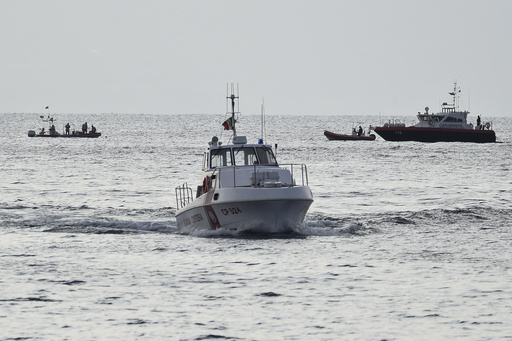Divers searching for the sunken superyacht off the coast of Sicily discovered the remains of five passengers on Wednesday, with one still missing. The operation, initially focused on rescue, had transitioned to a recovery mission due to the extended timeframe and lack of signs of life after three days of searching underwater. The yacht, named Bayesian, sank in a storm while moored about a kilometer offshore, believed to have been struck by a tornado or waterspout.
Among the 15 individuals who managed to escape on a lifeboat and were saved by a nearby sailboat, one body was recovered earlier, identified as Recaldo Thomas, the ship’s chef. Questions arose regarding the rapid sinking of the superyacht compared to the relatively unharmed sailboat nearby during the storm. Investigations by the authorities aimed to determine the cause of the tragedy, focusing on the condition of the yacht, which was built in 2008 by Italian shipyard Perini Navi.
Experts speculated on potential factors contributing to the sinking, including the yacht’s keel position and stability. The comparison with the sailboat that successfully rescued the survivors raised inquiries about the design and structural integrity of the vessels in such severe weather conditions. The diving operation to recover bodies and gather evidence for the investigation faced challenges due to the wreck’s depth, tight spaces, and limited visibility.
Italian coast guard and fire rescue teams, aided by remote-controlled underwater robots, were conducting the search and recovery mission. The absence of any signs of life inside the wreck led experts to believe that the operation had shifted primarily to recovery and investigation to unravel the circumstances surrounding the sinking. The efforts to understand the tragedy’s cause and sequence of events continued as authorities worked to piece together the events leading to the superyacht’s rapid descent into the ocean.
